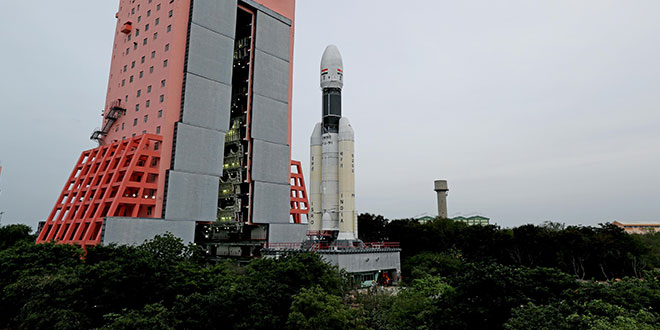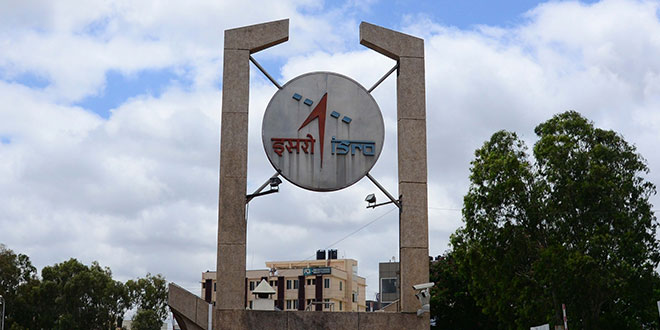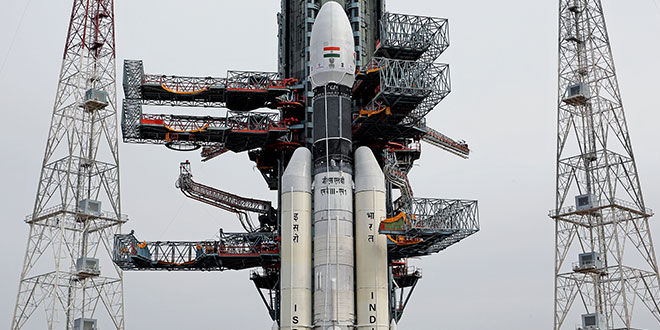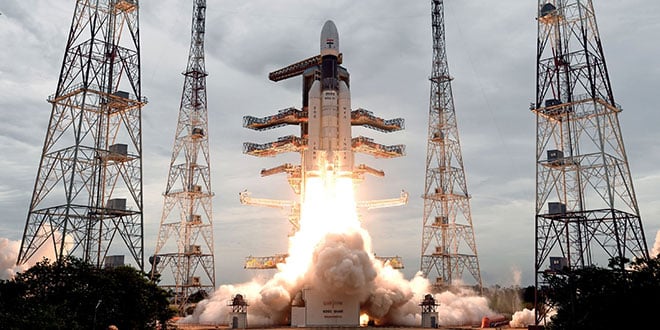
India’s second lunar mission was on track as its ‘Babubali’ GSLV rocket successfully put the moon spacecraft — Chandrayaan-2 — into the orbit in a copy book style on Monday afternoon.
The Rs 375 crore, heavy lift GSLV-Mk III rocket slung the Rs 603 crore, 3.8 tonne Chandrayaan-2 spacecraft in its intended earth parking orbit.
The 43.4 metre tall, 640 tonne rocket, nicknamed ‘Bahubali’, carried the 3.8-tonne Chandrayaan-2 spacecraft, which will carry out India’s second mission to its closest celestial neighbour.
From here, it will be a long, over one-and-a-half-month journey for Chandrayaan-2 as it will traverse the 384,400 km that separate Earth and its sole satellite.
After the launch, Indian Space Research Organisation (ISRO) Chairman K. Sivan said: “I’m extremely happy to announce that the GSLVMkIII-M1 successfully injected Chandrayaan-2 spacecraft into Earth orbit. It is the beginning of a historic journey for India towards the moon and to land at a place near South Pole to carry out scientific experiments. I salute to all those involved in the launch of Chandrayaan-2.”
The Geosynchronous Satellite Launch Vehicle-Mark III (GSLV-Mk III) blasted off from the second launch pad at the Satish Dhawan Space Centre (SDSC) in Sriharikota spaceport at exactly 2.43 p.m. to begin its ascent into space.
About 16 minutes into its flight, the rocket put into orbit Chandrayaan-2 that comprises three segments — the Orbiter (weighing 2,379 kg, eight payloads), the lander ‘Vikram’ (1,471 kg, four payloads) and rover ‘Pragyan’ (27 kg, two payloads) — to begin its 48-day journey to the Moon while the ISRO will raise the spacecraft’s orbit by a series of manoeuvres to put it on Lunar Transfer Trajectory in the coming days.
Originally the rocket was to fly on July 15, at 2.51 a.m. but due to a technical glitch, the mission was called off one hour before take-off.
After setting right the technical snag, the ISRO launched the rocket on Monday afternoon.
According to an ISRO official, the lander Vikram will land on the moon on September 7.
“Since this is the first moon landing mission of ISRO, we had built in buffer time which is being used now,” an ISRO official had told IANS.
As per the July 15 flight schedule, Chandrayaan-2’s earth bound phase was 17 days and it has now been revised to 23 days as per the new schedule.
On the other hand, the lunar-bound phase which was for 28 days under July 15 flight schedule, has come down to 13 days.
Originally Vikram was planned to land on the moon 54 days after the rocket’s lift off but will now do it in 48 days.
The Indian space agency has named the lander in memory of country’s space pioneer Vikram Sarabhai while the rover’s name means wisdom in Sanskrit.
According to the ISRO, on the day of landing – estimated on September 7, the lander Vikram will separate from the Orbiter and then perform a series of complex manoeuvres comprising rough braking and fine braking.
Imaging of the landing site region prior to landing will be done for finding safe and hazard-free zones.
The Vikram is expected to soft-land from a height of 100 km from the Moon’s surface near its South Pole — where, according to ISRO, no one has gone before — and carry out three scientific experiments.
Subsequently, the six-wheeled rover Pragyan will roll out and carry out two experiments on lunar surface for a period of one lunar day which is equal to 14 Earth days.
The Orbiter with eight scientific experiments will continue its mission for a duration of one year. It will be orbiting in 100×100 km lunar orbit.
The mission also has one passive experiment from the US space agency NASA.
The Indian space agency said the mission will also try to unravel the origins of the Moon.
Both the lander as well as the rover will have the Indian national flag painted on them, while the Ashoka Chakra will be imprinted on the rover’s wheels.
The success of Chandrayaan-2 mission will make India the fourth country in the world to land a vehicle and travel on the Moon surface after the US, Russia and China.
A total number of 38 soft landing attempts have been made, so far. The success rate is 52 per cent.
India launched its first Moon mission Chandrayaan-1 in October 2008, using its light rocket Polar Satellite Launch Vehicle (PSLV).
For this mission, it used the GSLV-Mk III, a three stage/engine rocket with two strap-on motors powered by solid fuel. The second stage is a core liquid fuel booster and the third is the cryogenic engine. The carry capacity is four tons.
Till date ISRO has sent up three GSLV-Mk III rockets. The first one was on December 18, 2014 carrying Crew Module Atmospheric Reentry Experiment (3.7 ton). The mission was also to test the rocket’s inflight structural stability.
The second and third GSLV-Mk IIIs went up on June 5, 2017 and November 14, 2018 carrying communication satellites GSAT-19 (3.1 tonne) and GSAT-29 (3.4 tonne) respectively.
GSLV-Mk III will be used for India’s manned space mission slated in 2022.
India presently has two fully operational rockets — the Polar Satellite Launch Vehicle (PSLV) and GSLV-Mk II — with a lift-off mass of 415 tons and a carrying capacity of 2.5 tonnes.
India puts into orbit foreign satellites for a fee using its PSLV rocket. Revenue for launching satellites depends on weight of the satellite – higher the weight, higher the revenue.
Foreign customers are yet to come for the GSLV-Mk II rocket.








